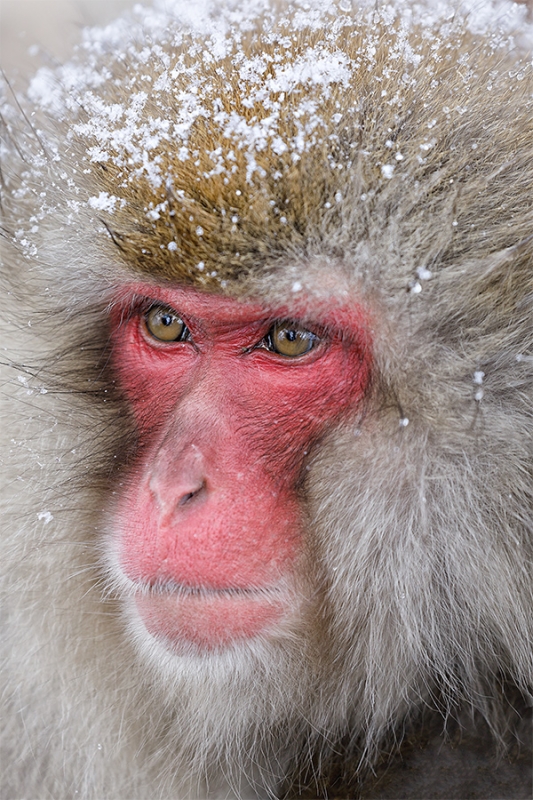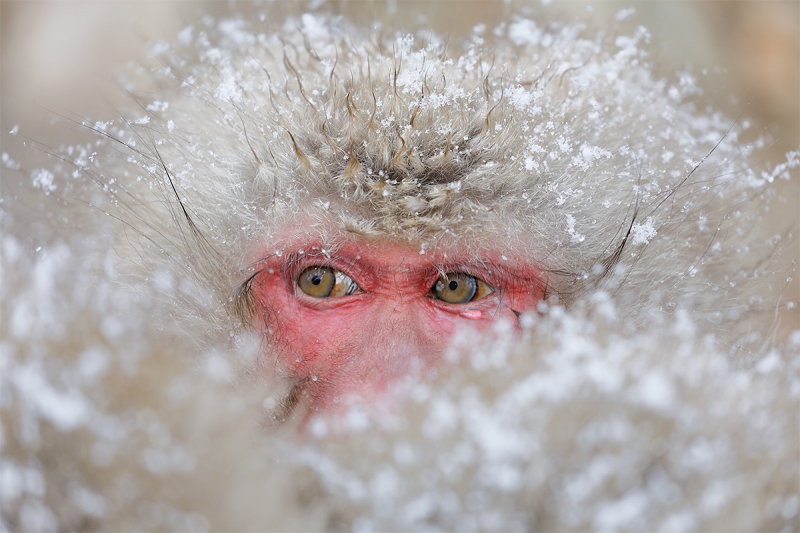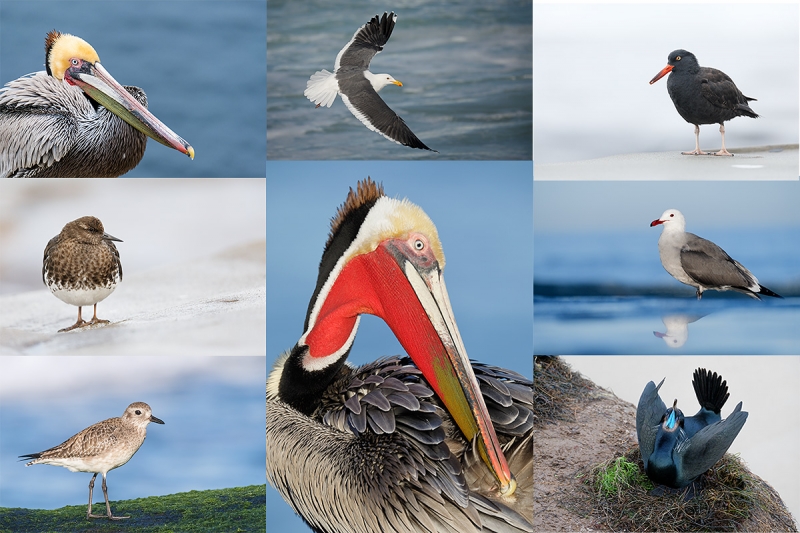What’s Up?
It was 1 degree F on Monday morning at Lake Kussharo, Japan. The Whooper Swan were cooperative as always. We finished off with flying and displaying Red-crowned Cranes right near our lodge. I will continue to have good internet access every day. I get home late on 28 FEB.
Comments on yesterday’s blog post were inadvertently closed; they were re-opened at the end of the day. If you’d like to chime in on this:
Photoshop Question
Where was the fairly large dark area in the background that merged a bit with the subject? I actually attempted to remove it months ago without leaving much evidence but failed pretty miserably. I tried again late on the afternoon of Thursday 9 FEB in our Tokyo hotel. How did I do?
please click here.
Gear Questions and Advice
Too many folks attending BAA IPTs and dozens of folks whom I see in the field, and on BPN, are–out of ignorance–using the wrong gear, especially when it comes to tripods and more especially, tripod heads… Please know that I am always glad to answer your gear questions via e-mail.
The Streak: 465!
Today’s blog post marks a totally insane, irrational, illogical, preposterous, absurd, completely ridiculous, unfathomable, silly, incomprehensible, what’s wrong with this guy?, makes-no-sense, 465 days in a row with a new educational blog post. As always–and folks have been doing a really great for a long time now–please remember to use our B&H links for your major gear purchases. For best results use one of our many product-specific links; after clicking on one of those you can continue shopping with all subsequent purchases invisibly tracked to BAA. Your doing so is always greatly appreciated. Please remember: web orders only. And please remember also that if you are shopping for items that we carry in the BAA Online Store (as noted in red at the close of this post below) we would of course appreciate your business.
|
|
|
This image was created at the Monkey Part at Jigokudani, Japan with the hand held Canon EF 100-400mm f/4.5-5.6L IS II USM lens (at 330mm) with my very favorite bird photography camera body, the Canon EOS 5D Mark IV. ISO 800. Evaluative metering +1/3 stop: 1/125 sec.at f/6.3 in Manual mode. AWB. LensAlign/FocusTune micro-adjustment: -1. One AF point to the left of the center AF point/AI Servo/Expand/shutter button AF was active at the moment of exposure. The selected AF point just caught the lower corner of the monkey’s left eye. Click on the image to see a larger version. Image #1: Snow Monkey in Snow |
Snowy Snow Monkeys…
On our first photography afternoon we lucked out with a decent snowfall. There was more snow on the ground than I had ever seen before; there was five or more feet of accumulated snow adjacent to some of the paths. Co-leader Paul McKenzie alerted the group to a pile of Snow Monkeys that he had spotted. We had close to an hour with Paul’s pile (group photo from above coming soon) and soon everyone in the group joined in and made some really good images.
More 100-400 II Versatility
Just as on the cliffs of La Jolla, the hand held 100-400 II was deadly effective at the Monkey Park. For three straight days it was the only lens that I carried up the hill. I had the 1.4X TC in my pocket and used it several times. The great four-stop IS system allowed me to make the 45 minute uphill without having to carry the tripod, adding the TC gave me 560mm of full frame reach, and the incredible slightly less than 1 meter minimum focusing distance performed like a macro/telephoto lens with the wonderfully tame monkeys.
|
|
|
This image was created at the Monkey Part at Jigokudani, Japan with the hand held Canon EF 100-400mm f/4.5-5.6L IS II USM lens (at 400mm) with my very favorite camera body, the Canon EOS 5D Mark IV. ISO 400. Evaluative metering +1 1/3 stops: 1/125 sec.at f/6.3 in Manual mode. AWB. LensAlign/FocusTune micro-adjustment: +1. Center AF point(Manual selection: single point)/AI Servo//shutter button AF was active (right between the monkey’s eyes) at the moment of exposure. Click on the image to see a larger version. Image #2: Young Snow Monkey eyes in Snow |
Your Favorite?
Which of today’s featured images do you like best? Be sure to let us know why you made your choice.
|
|
2017 in San Diego was a very good year …. |
2018 San Diego 4 1/2-DAY BIRDS AS ART IPT: Monday, JAN 15 thru and including the morning session on Friday, JAN 19, 2018: 4 1/2 days: $2099.
Limit: 8: Openings: 3
Meet and Greet at 6:30pm on the evening before the IPT begins; Sunday, Jan 14, 2018.
Join me in San Diego to photograph the spectacular breeding plumage Brown Pelicans with their fire-engine red and olive green bill pouches; Brandt’s (usually nesting and displaying) and Double-crested Cormorants; breeding plumage Ring-necked Duck; other duck species possible including Lesser Scaup, Redhead, Wood Duck and Surf Scoter; a variety of gulls including Western, California, and the gorgeous Heerman’s, all in full breeding plumage; shorebirds including Marbled Godwit, Whimbrel, Willet, Sanderling and Black-bellied Plover; many others possible including Least, Western, and Spotted Sandpiper, Black and Ruddy Turnstone, Semipalmated Plover, and Surfbird; Harbor Seal (depending on the current regulations) and California Sea Lion; and Bird of Paradise flowers. And as you can see by studying the two IPT cards there are some nice bird-scape and landscape opportunities as well. Please note: formerly dependable, both Wood Duck and Marbled Godwit have been declining at their usual locations for the past two years …
|
San Diego offers a wealth of very attractive natural history subjects. With annual visits spanning more than three decades I have lot of experience there…. |
With gorgeous subjects just sitting there waiting to have their pictures taken, photographing the pelicans on the cliffs is about as easy as nature photography gets. With the winds from the east almost every morning there is usually some excellent flight photography. And the pelicans are almost always doing something interesting: preening, scratching, bill pouch cleaning, or squabbling. And then there are those crazy head throws that are thought to be a form of intra-flock communication. You can do most of your photography with an 80- or 100-400 lens …
Did I mention that there are wealth of great birds and natural history subjects in San Diego in winter?
|
Though the pelicans will be the stars of the show on this IPT there will be many other handsome and captivating subjects in wonderful settings. |
The San Diego Details
This IPT will include five 3 1/2 hour morning photo sessions, four 2 1/2 hour afternoon photo sessions, four lunches, and after-lunch image review and Photoshop sessions. To ensure early starts, breakfasts will be your responsibility. Dinners are on your own so that we can get some sleep.
A $599 non-refundable deposit is required to hold your slot for this IPT. You can send a check (made out to “Arthur Morris) to us at BIRDS AS ART, PO Box 7245, Indian Lake Estates, FL, 33855. Or call Jim or Jennifer at the office with a credit card at 863-692-0906. Your balance, payable only by check, will be due on 9/11//2016. If we do not receive your check for the balance on or before the due date we will try to fill your spot from the waiting list. Please print, complete, and sign the form that is linked to here and shoot it to us along with your deposit check. If you register by phone, please print, complete and sign the form as noted above and either mail it to us or e-mail the scan. If you have any questions, please feel free to contact me via e-mail.
Please Remember to use my Affiliate Links and to Visit the New BAA Online Store 🙂
To show your appreciation for my continuing efforts here, we ask, as always, that you get in the habit of using my B&H affiliate links on the right side of the blog for all of your photo and electronics purchases. Please check the availability of all photographic accessories in the New BIRDS AS ART Online Store, especially the Mongoose M3.6 tripod head, Wimberley lens plates, Delkin flash cards and accessories, and LensCoat stuff.
As always, we sell only what I have used, have tested, and can depend on. We will not sell you junk. We know what you need to make creating great images easy and fun. And please remember that I am always glad to answer your gear questions via e-mail.
I would of course appreciate your using our B&H affiliate links for all of your major gear, video, and electronic purchases. For the photographic stuff mentioned in the paragraph above, and for everything else in the new store, we, meaning BAA, would of course greatly appreciate your business. Here is a huge thank you to the many who have been using our links on a regular basis and those who will be visiting the New BIRDS AS ART Online Store as well.
Be sure to like and follow BAA on Facebook by clicking on the logo link upper right. Tanks a stack.
Typos
In all blog posts and Bulletins, feel free to e-mail or to leave a comment regarding any typos or errors. Just be right :).



















Hi Artie,
I am going to disagree. I like #1 snow monkey image better. It has a clean view of the monkey’s face and you have a sense of the spirit of this monkey. Whereas in the second image, you see some eyes, but it’s hard for an average viewer to really discern what animal it is–almost too much mystery. Also, I think that the eyes here are looking away. It would have been a much more powerful image if the eyes were looking directly at the viewer or photographer. Then, you would have the sense that you were looking into its soul, as the eyes engaged you directly. Not sure if you are having more sessions with the snow monkeys. I would try the same technique of shooting a face surround by the heads of the other monkeys but wait until the moment when the subject monkey’s eyes directly engage you. In my opinion, I think this would be a more powerful and haunting image. As a reference image, I think most of us would remember, Frans Lanting’s Mountain Lion cover image to one of his earlier books. Where he included just the face with those enchanting and dominant large cat eyes.
Lovely images, my pick would be #2. The image has almost a landscape feel to it, the foreground snow could easily be some snow-tipped bushes. The fact that you’re not seeing its nose adds to the coldness of the environment that the viewer can almost feel. Add the casual sideways glance – this means that it ain’t moving from its warm spot, not even to glance across at that female that just got out of the hot tub.
Lots more to make the eye wander and the mind wonder.
For me the first shot is simply more interesting and does give at least a little context with the obvious snow on the fur. The second really does nothing at all for me but frankly I’m not really into the tight head shots. I think a shot showing the monkey in the snow would be more interesting but that’s just my personal opinion.
Thanks for the feedback on camera bodies. I need to do considerably more research before I decide to drop that much cash on a body. So far I’m using a 70d and 100-400 mk2 and my next purchase will probably be a longer lens. I’m strongly considering the 500mm f4 II but the Sigma 500mm f/4 sport looks pretty interesting as well, especially considering that Sigma offers the dock to tweak it. When I buy I will keep your site in mind.
YAW> What does this mean: “Sigma offers the dock to tweak it.”?
My understanding is that any of the cameras you asked about will be a big step up from the 70D. Using my B&H link will not cost you one penny more, B&H offers the lowest prices and great service, and dong so is the best way to thank me for the time I put into the blog and the time I spend answering questions via e-mail.
The Sigma lens cannot come within miles of the 500 II and that goes for triple when using the 1.4X and 2X III TCs.
artie
Best to check and see which TCs the Sigma lens might work with before you buy.
a
ps: For a monkey in the snow image be sure to check out “The Veiled Monkey” coming up in a few days …
I like two. The circle of snow covered fur locks attention on the monkey’s eyes and the upward sweeping black hairs to the side of each eye are an interesting feature.
Tanks Craig!
a
funny comments!
I like both images very much.
My favorite is #2. I guess it’s a little bit more intimate, and, more unusual. Like he’s bundled into a fur coat up to his eyes!
I’m curious though: was there another Snow Monkey in front of the subject you photographed?
No. There were two 🙂
a
Would you please share why the 5dmk4 is your favorite birding camera as opposed to something like the 1dx II or the 5dsr?
On the photos from today I strongly prefer the first one.
Hi Richard,
Why the first one?
You must be relatively new here so welcome; I covered that in depth last year. Do a search for “5D Mark IV” in the little white box top right. Here are the basics: it is harder to make sharp images with the densely packed pixels of the 5DS R than it is with the 5D IV. That said, the image quality in a sharp 5DS R file is unmatched. Comparing the 1DX II to the 5D IV the only thing that the 1DX II has over the 5D IV is frame rate. The AF systems are equal and image quality with the 5D IV is better than 1DX II IQ.
If you do purchase any new photo gear, please remember to use my generic B&H affiliate on the top right of each blog page just below the Google custom search box.
a
Great images. This has been a bad year for snow in La Jolla though. I like #2 best for the extreme tight shot.
Thanks Ron. See my response to Phil below.
a
I love the second photo, almost human like. Also the turned eyes. The only thing is I do not believe it was taken at La Jolla as per caption. 🙂
Thanks Johann. See my response to Phil below.
a
I don’t think your second image was taken in La Jolla. Nice shot.
Hey Phil, I am trying hard to get folks to sign up for the san Diego IPT! (Thanks; my cut and paste error has been fixed along with the incorrect exposure data.)